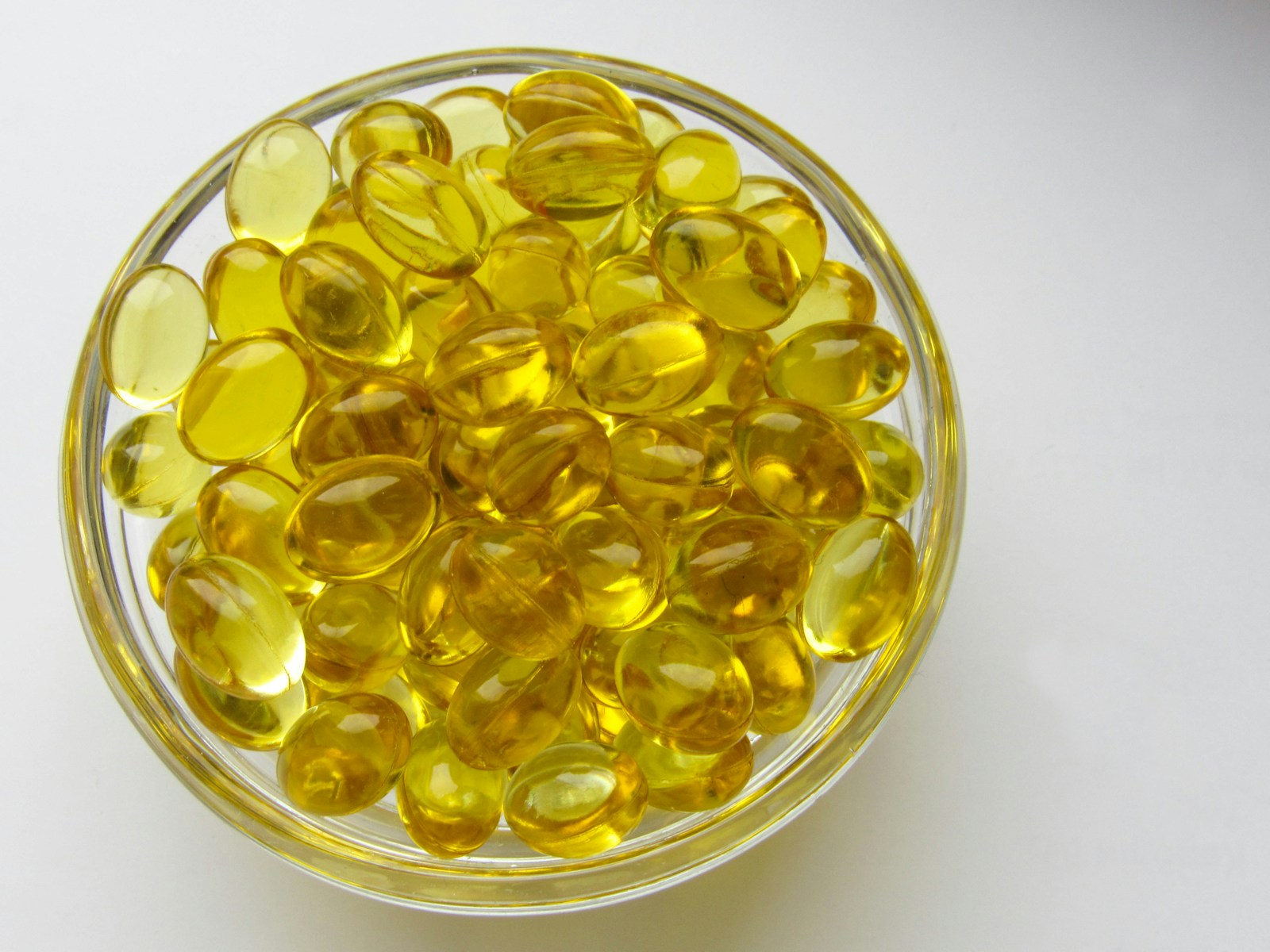
In a stark and sobering revelation that underscores the often-overlooked dangers lurking within our daily routines, experts are sounding a significant alarm following the death of an elderly man from a vitamin D overdose. This tragic incident, occurring in suburban London, England, has cast a harsh light on the critical need for clearer warnings and enhanced public awareness regarding the potentially severe risks associated with seemingly innocuous dietary supplements.
David Mitchener, an 89-year-old retired businessman from Oxted, Surrey, passed away after consistently taking high levels of a vitamin D supplement for at least nine months leading up to his death. His case, culminating in a coroner’s investigation that found his demise to be a “death by misadventure,” serves as a potent reminder that even widely consumed health aids can carry perilous consequences when taken in excess, especially when consumers are unaware of the hidden dangers.
Mr. Mitchener was admitted to East Surrey Hospital on May 10, 2023, presenting with hypercalcemia, a serious condition characterized by abnormally high levels of calcium in the body. Despite receiving medical treatment, he tragically succumbed to his condition just ten days later, on May 20. Post-mortem examinations revealed that his vitamin D levels were an astonishing 380, which the laboratory identified as “the maximum level recordable by the laboratory.” To put this in perspective, Harvard University recommends that adults maintain a level of 30 to “guarantee sufficiency,” highlighting the extreme deviation in Mr. Mitchener’s physiological state.
The official inquest into Mr. Mitchener’s death, which concluded in December, identified multiple contributing factors to his passing. The primary cause of death was listed as vitamin D toxicity, also known as hypervitaminosis D, alongside hypercalcemia, congestive heart failure, chronic kidney failure, and Ischaemic Heart Disease, a condition where blood no longer flows efficiently to the organ. The assistant coroner for Surrey, Jonathan Stevens, expressed profound concerns about the circumstances surrounding this tragedy, particularly focusing on the glaring absence of explicit warnings on the supplement packaging.

Coroner Stevens, in his official report, directly criticized the lack of consumer information, stating unequivocally: “There were no warning on or in the packaging detailing the specific risks or side effects of taking Vitamin D supplements.” He further elaborated on the gravity of the situation, adding, “In my opinion there is a risk that future deaths will occur unless action is taken.” This urgent call to action underscores a systemic failure in communicating vital health information to the public, leaving individuals vulnerable to preventable harm.
The coroner’s concerns extended to the broader regulatory framework governing such products. He pointed out that “current food labelling requirements do not require these risks and side effects to be written of the packaging,” lamenting the “absence of appropriate warnings and guidance about dosage.” Mr. Stevens’ report was subsequently sent to the Department of Health and Social Care (DHSC) and the Food Standards Agency (FSA), as well as to NaturePlusUK, the company from which Mr. Mitchener had purchased the supplements. This move aims to provoke a much-needed re-evaluation of how health risks are communicated on supplement products.
While a spokesperson for the FSA clarified that policy responsibility for food supplements in England was not directly within their remit, the DHSC responded with solemnity, stating: “Our deepest sympathies are with the family and friends of David Mitchener. We will consider the coroner’s findings in full and respond in due course.” This official acknowledgement signals a potential pathway for policy changes, echoing the coroner’s forceful plea for improved consumer safeguards. The case brings to the forefront the pressing need for greater transparency and accountability from both manufacturers and regulatory bodies in ensuring the safety of over-the-counter health products.
Vitamin D, often lauded as the “sunshine vitamin,” plays an indispensable role in maintaining overall health. It is vital for building and preserving strong bones, healthy teeth, and robust muscles because the body relies on it to absorb calcium effectively. Beyond its skeletal benefits, vitamin D boasts anti-inflammatory, antioxidant, and neuroprotective properties that contribute significantly to immune health, muscle function, and optimal brain cell activity. Given its widespread importance, many individuals, often seeking to bridge perceived nutritional gaps, turn to vitamin D supplements, cementing its status as one of the most popular dietary aids available.

However, as the tragic case of David Mitchener demonstrates, an excessive intake of this crucial nutrient can transform it from a health ally into a dangerous adversary. Experts refer to this condition as hypervitaminosis D, or vitamin D toxicity. Pieter Cohen, an associate professor of medicine at the Cambridge Health Alliance in Massachusetts, highlights that vitamin D acts as a hormone in the body, and too much of it “can cause a cascade of problems.” The primary and most immediate danger is the development of hypercalcemia, the very condition that afflicted Mr. Mitchener. This excessive buildup of calcium in the blood can severely weaken bones, lead to the formation of kidney stones, and inflict damage on vital organs like the kidneys and heart.
The symptoms of vitamin D overdose can be insidious and easily mistaken for other ailments, making early detection challenging. Initial signs, as described by experts, may include increased thirst, excessive urination, and nausea. However, Dr. Maryann Amirshahi, a professor of emergency medicine at Georgetown University and co-medical director of the National Capital Poison Center, warns that these symptoms can progress to much more ominous manifestations, such as confusion and profound weakness. The National Institutes of Health (NIH) further elaborates on the cascade of health issues, noting that “very high levels of vitamin D in your blood (greater than 375 nmol/L or 150 ng/mL) can cause nausea, vomiting, muscle weakness, confusion, pain, loss of appetite, dehydration, excessive urination and thirst, and kidney stones.” In the most severe instances, the NIH cautions that “Extremely high levels of vitamin D can cause kidney failure, irregular heartbeat and even death.”
Understanding appropriate dosage is paramount to avoiding such grave outcomes. For most adults, the recommended daily intake of vitamin D is approximately 600 international units (IUs), equivalent to 15 micrograms (mcg). This recommendation is consistently echoed by leading health organizations such as the Mayo Clinic and the NIH Office of Dietary Supplements. Specific guidelines vary slightly by age: adults aged 19 to 70 are advised to consume 600 IU (15 mcg), while those over 70 should aim for 800 IU (20 mcg) per day. For the UK, NHS guidance suggests 10 micrograms per day for most people, and the Scientific Advisory Committee on Nutrition recommends 400 IU (10 mcg) for individuals aged four and older.
However, the threshold for toxicity is significantly higher, yet not universally understood by consumers. According to the Mayo Clinic, taking 60,000 IUs or more per day over several months can induce an overdose. Pieter Cohen reinforces this, stating that overdosages typically occur with “taking much more — usually 60,000 international units a day or more.” He also advises that healthy individuals should not consume more than 4,000 IU (100 mcg) per day, as exceeding this amount can initiate a host of bodily problems due to vitamin D’s hormonal actions. Dr. Amirshahi points out a common pitfall: some vitamin D prescriptions are dosed once a week, and accidental daily intake can swiftly lead to toxicity, highlighting the critical importance of clear instructions and patient understanding.

Joanne Slavin, Ph.D., a professor in the Department of Food Science and Nutrition at the University of Minnesota, explains that fat-soluble vitamins like A, D, E, and K are stored in the liver and fatty tissues. Unlike water-soluble vitamins, the body cannot easily eliminate excess amounts of these nutrients. This characteristic makes them “nutrients of concern” when consumed in large quantities over time, leading to a buildup that can reach toxic levels. This inherent property of vitamin D underscores why vigilance in dosage is far more critical than with other types of supplements.
An alarming aspect of the current landscape is the regulatory environment surrounding dietary supplements. In the United States, vitamin D is sold as a dietary supplement, meaning it is not subject to the rigorous approval process of the Food and Drug Administration (FDA) that applies to pharmaceutical drugs. Pieter Cohen highlights this critical distinction, noting that manufacturers are largely free to determine dosages and are “not required to place warnings on even the highest doses of vitamin D that it is dangerous to take too much.” This regulatory gap allows for a wide spectrum of product formulations, some of which, like the NaturPlus UK supplements in question, allegedly contain single capsules with 5,000 IU (125 mcg) of vitamin D, exceeding the UK’s daily upper limit of 4,000 IU (100 mcg) for individuals 11 and older, as set by the European Food Safety Authority.
Compounding the issue, experts warn that supplement manufacturing can be inconsistent, meaning the dose stated on the label might not always be accurate. Cohen emphasizes, “Research of vitamin D supplements in the U.S. has revealed that sometimes you can get too little or too much vitamin D in the pills.” To mitigate this risk, he recommends that consumers prioritize vitamin D supplements certified by reputable third-party organizations such as USP (United States Pharmacopeia) or NSF International, which independently verify product content and purity. The FDA has acknowledged concerns, reportedly pressuring the pharmaceutical sector to make potentially dangerous supplements appear and taste less candy-like to prevent excessive intake, particularly among children.
While the focus often falls on supplements, it is crucial to remember that dangerously high levels of vitamin D almost invariably stem from consuming excessive amounts through dietary supplements. The body possesses a natural regulatory mechanism that prevents vitamin D toxicity from sun exposure; as the NIH states, “You cannot get too much vitamin D from sunshine because your skin limits the amount of vitamin D it makes.” Natural dietary sources, though important, typically do not provide enough vitamin D to cause toxicity either. Foods rich in vitamin D include oily fish like salmon and trout, fortified milk and cereals, and egg yolks, offering safe avenues for intake.

The rising trend of vitamin D-related incidents is deeply concerning. The U.S. National Poison Data System reported nearly 10,500 cases involving vitamin D in 2022, a significant increase from approximately 5,900 cases just a decade prior in 2012. This upward trajectory underscores the escalating public health challenge posed by the widespread availability and often unregulated consumption of these supplements. The coroner’s call for change is thus not merely a response to a single tragedy but a vital plea to address a growing systemic problem that puts countless individuals at risk.
In the event of an overdose, immediate medical intervention is critical. Treatment typically involves discontinuing the supplement, restricting dietary calcium, and often includes intravenous (IV) therapy and medications such as corticosteroids or bisphosphonates. Dr. Amirshahi notes that for a recent, large single dose, activated charcoal might be administered in an emergency department to help bind the vitamin D before it’s absorbed. However, once absorbed, the primary focus shifts to managing the elevated calcium levels, which may involve IV fluids, calcium-lowering medications, and, in severe cases where other measures prove insufficient, dialysis.
The tragic death of David Mitchener serves as a somber and urgent beacon, illuminating the critical deficiencies in how health risks are communicated to consumers. Coroner Jonathan Stevens’ resolute demand for comprehensive warnings on supplement packaging is not just a bureaucratic request; it is a fundamental appeal for consumer safety and informed decision-making. As the market for dietary supplements continues its rapid expansion, it becomes increasingly imperative for regulatory bodies, manufacturers, and the public alike to embrace a culture of transparency and caution. Individuals are urged to exercise vigilance, to scrutinize product labels, and most importantly, to consult with healthcare professionals before embarking on any supplement regimen, ensuring that the pursuit of health does not inadvertently lead to devastating consequences.




